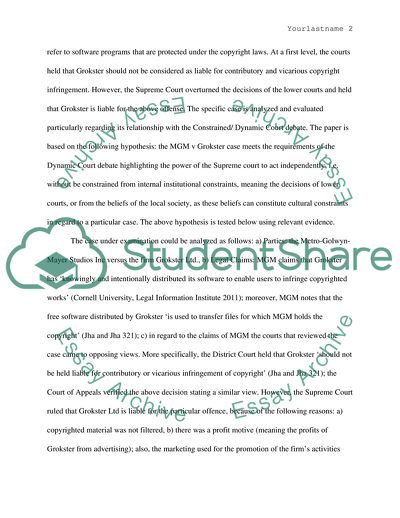Cite this document
(MGM v Grokster in Light of the Constrained Court Debate Case Study Example | Topics and Well Written Essays - 2250 words, n.d.)
MGM v Grokster in Light of the Constrained Court Debate Case Study Example | Topics and Well Written Essays - 2250 words. https://studentshare.org/law/1762434-researching-and-analyzing-mgm-v-grokster-case-an-actual-dispute-in-light-of-the-constraineddynamic-court-debate
MGM v Grokster in Light of the Constrained Court Debate Case Study Example | Topics and Well Written Essays - 2250 words. https://studentshare.org/law/1762434-researching-and-analyzing-mgm-v-grokster-case-an-actual-dispute-in-light-of-the-constraineddynamic-court-debate
(MGM V Grokster in Light of the Constrained Court Debate Case Study Example | Topics and Well Written Essays - 2250 Words)
MGM V Grokster in Light of the Constrained Court Debate Case Study Example | Topics and Well Written Essays - 2250 Words. https://studentshare.org/law/1762434-researching-and-analyzing-mgm-v-grokster-case-an-actual-dispute-in-light-of-the-constraineddynamic-court-debate.
MGM V Grokster in Light of the Constrained Court Debate Case Study Example | Topics and Well Written Essays - 2250 Words. https://studentshare.org/law/1762434-researching-and-analyzing-mgm-v-grokster-case-an-actual-dispute-in-light-of-the-constraineddynamic-court-debate.
“MGM V Grokster in Light of the Constrained Court Debate Case Study Example | Topics and Well Written Essays - 2250 Words”. https://studentshare.org/law/1762434-researching-and-analyzing-mgm-v-grokster-case-an-actual-dispute-in-light-of-the-constraineddynamic-court-debate.


